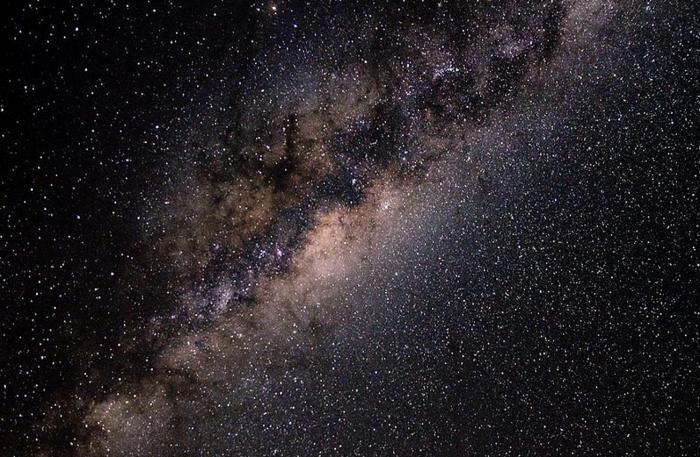
I, with many others, have looked up at the night sky and been disappointed. We hope to see the glittering night sky, while only catching a few of the brightest stars; stargazing, for many, has become a thing of the past. This reality is the same for an alarming amount of the world: one-third of all people and 80% of North Americans cannot see the Milky Way Galaxy. This hard truth is due to our overuse of lights during the night, which impacts humans, and hurts many wildlife species whose natural patterns are disturbed by artificial light sources. The death toll for these animals continues to rise as another source of unsustainable anthropogenic practices hurts the Earth’s natural patterns. Overuse of light harms the well-being of other animals and human health, disrupting the natural chemicals in our brains which leads to fatal diseases. Light pollution is a severe problem and a silent killer.
You may have heard of this problem concerning sea turtles. Mortality rates of baby sea turtles have significantly risen due to light pollution. When the babies hatch, they follow the moon’s light to find their way to the ocean, but this pattern is interrupted by other light sources, confusing them, meaning many of them will die before making it to the sea, heading in the wrong directions. Light pollution also harms birds; their migratory patterns are interrupted by urban areas drawing them in. Artificial lights and their glares can confuse birds, causing them to crash into windows or buildings. The disoriented birds then plummet to their death, filling the city streets until eaten by other predators. Studies also show that certain animals, such as wallabies, closer to brighter, more human-populated areas produced offspring four weeks later than their counterparts farther from humans and the subsequent light pollution. This pattern could cause problems with feeding, misaligning peaks of offspring demand, and food availability.
But light pollution also has significant links to human health problems. Overexposure to brightness at night disrupts natural brain chemical production important to our natural, healthy bodily habits. Leptin is a chemical released in our brains at night as an appetite suppressant, so we can sleep without being hungry. Persistently low levels of leptin, caused by overuse of light, are linked to obesity, an illness that puts people at risk for other health problems. Furthermore, light pollution triggers low melatonin levels and circadian disruption, possibly contributing to other health issues such as heart disease, diabetes, depression, and cancer, specifically breast cancer. Light pollution is slowly killing us, and we must do something about it.
The good news is that you can help:
- close your blinds to help stop birds from getting disoriented and keep light inside reduces the light pollution outdoors
- using lights only when necessary reduces both light pollution and energy waste
- if you require outdoor lights, you can adjust them to have motion sensors and timers, a solution better for animals and the night sky; this fix keeps the outside darker, meaning less disruption to your cerebral chemical balance, reverting your body to its natural cycle
- use light shields and get rid of up-lighting; this way, lights are pointed only where they’re needed and don’t light up the night sky
- replace bulbs with warmer and dimmer LEDs to conserve energy and reduce the risk of harming animals and interfering with your natural hormone production
- participate in “Lights Out” program and turn off lights during bird migration seasons
- participate in Earth Hour and shut off lights in solidarity
- avoid blue lights at night to prevent hormone disruption
- turn off lights at night in empty office buildings
We can all do our part: bringing back our night sky and simultaneously reducing the risk of harm to the well-being of animals or even ourselves.
Sources:
- [cover image] Roanish, https://www.flickr.com/photos/roanish/5968666848/
- IDA Team. (n.d.). “Light Pollution Solutions,” International Dark-Sky Association. Retrieved from https://www.darksky.org/light-pollution/light-pollution-solutions/
- Drake, N. (2019). “Light pollution is getting worse, and Earth is paying the price,” National Geographic. Retrieved from https://www.nationalgeographic.com/science/article/nights-are-getting-brighter-earth-paying-the-price-light-pollution-dark-skies
- IDA Team. (n.d.). “Light Pollution,” International Dark-Sky Association. Retrieved from https://www.darksky.org/light-pollution/
- National Geographic Society. (2022). “Light Pollution,” National Geographic. Retrieved from https://www.nationalgeographic.org/article/light-pollution/
- Filed Under: Other
- ( 2752 ) views
- ( 0 ) Ratings
- ( 5 ) Discussions
- ( 0 ) Group Posts
Reply/Leave a Comment (You must be logged in to leave a comment)
Most of the light pollution is due to bad lighting design. We should do a follow-up piece on design solutions to help solve this problem.
By Matt Hoots I Jun 30, 2022Connect with us!
Subscribe to our monthly newsletter:
 Greenbuild Report Out, 2025 Nov 12, 2025
Greenbuild Report Out, 2025 Nov 12, 2025

























Not a Member Yet? Register and Join the Community | Log in